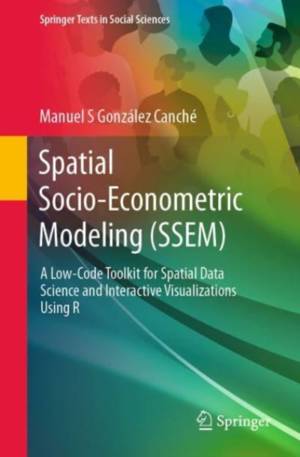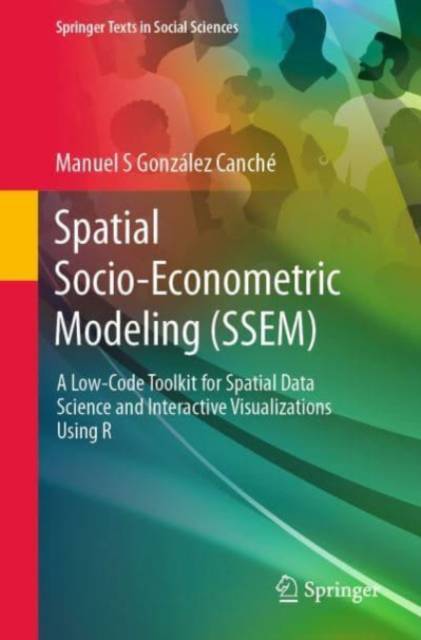
- Retrait gratuit dans votre magasin Club
- 7.000.000 titres dans notre catalogue
- Payer en toute sécurité
- Toujours un magasin près de chez vous
- Retrait gratuit dans votre magasin Club
- 7.000.000 titres dans notre catalogue
- Payer en toute sécurité
- Toujours un magasin près de chez vous
Spatial Socio-Econometric Modeling (Ssem)
A Low-Code Toolkit for Spatial Data Science and Interactive Visualizations Using R
Manuel S González Canché
89,95 €
+ 179 points
Description
With the primary goal of expanding access to spatial data science tools, this book offers dozens of minimal or low-code functions and tutorials designed to ease the implementation of fully reproducible Spatial Socio-Econometric Modeling (SSEM) analyses. Designed as a University of Pennsylvania Ph.D. level course for sociologists, political scientists, urban planners, criminologists, and data scientists, this textbook equips social scientists with all concepts, explanations, and functions required to strengthen their data storytelling. It specifically provides social scientists with a comprehensive set of open-access minimal code tools to:
-Identify and access place-based longitudinal and cross-sectional data sources and formats-Conduct advanced data management, including crosswalks, joining, and matching
-Fully connect social network analyses with geospatial statistics-Formulate research questions designed to account for place-based factors in model specification and assess their relevance compared to individual- or unit-level indicators-Estimate distance measures across units that follow road network paths -Create sophisticated and interactive HTML data visualizations cross-sectionally or longitudinally, to strengthen research storytelling capabilities-Follow best practices for presenting spatial analyses, findings, and implications-Master theories on neighborhood effects, equality of opportunity, and geography of (dis)advantage that undergird SSEM applications and methods-Assess multicollinearity issues via machine learning that may affect coefficients' estimates and guide the identification of relevant predictors-Strategize how to address feedback loops by using SSEM as an identification framework that can be merged with standard quasi-experimental techniques like propensity score models, instrumental variables, and difference in differences-Expand the SSEM analyses to connections that emerge via social interactions, such as co-authorship and advice networks, or any form of relational data
The applied nature of the book along with the cost-free, multi-operative R software makes the usability and applicability of this textbook worldwide.
-Identify and access place-based longitudinal and cross-sectional data sources and formats-Conduct advanced data management, including crosswalks, joining, and matching
-Fully connect social network analyses with geospatial statistics-Formulate research questions designed to account for place-based factors in model specification and assess their relevance compared to individual- or unit-level indicators-Estimate distance measures across units that follow road network paths -Create sophisticated and interactive HTML data visualizations cross-sectionally or longitudinally, to strengthen research storytelling capabilities-Follow best practices for presenting spatial analyses, findings, and implications-Master theories on neighborhood effects, equality of opportunity, and geography of (dis)advantage that undergird SSEM applications and methods-Assess multicollinearity issues via machine learning that may affect coefficients' estimates and guide the identification of relevant predictors-Strategize how to address feedback loops by using SSEM as an identification framework that can be merged with standard quasi-experimental techniques like propensity score models, instrumental variables, and difference in differences-Expand the SSEM analyses to connections that emerge via social interactions, such as co-authorship and advice networks, or any form of relational data
The applied nature of the book along with the cost-free, multi-operative R software makes the usability and applicability of this textbook worldwide.
Spécifications
Parties prenantes
- Auteur(s) :
- Editeur:
Contenu
- Nombre de pages :
- 503
- Langue:
- Anglais
- Collection :
Caractéristiques
- EAN:
- 9783031248566
- Date de parution :
- 02-07-23
- Format:
- Livre broché
- Format numérique:
- Trade paperback (VS)
- Dimensions :
- 156 mm x 234 mm
- Poids :
- 757 g







